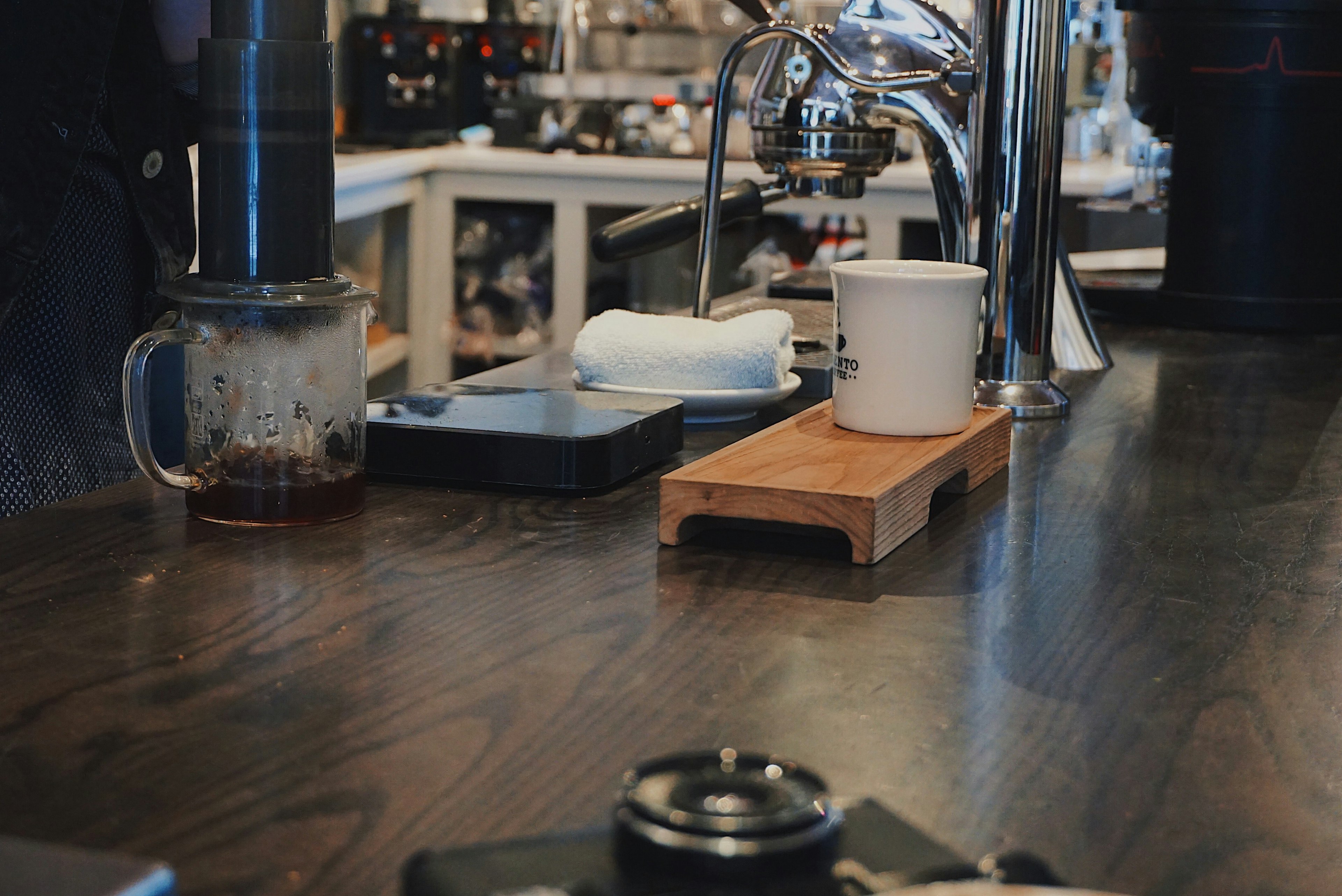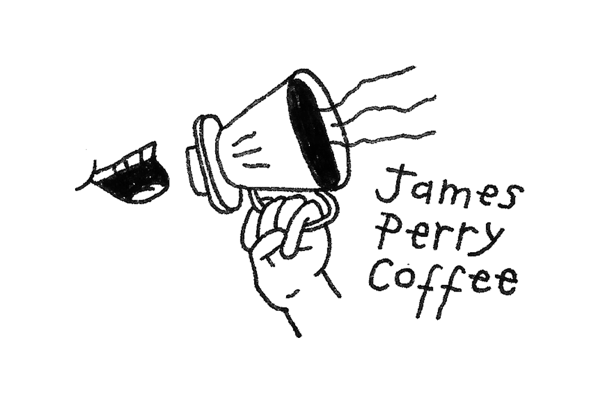Howdy pals!
This post today comes from piecing together my crushing defeat at the Aeropress Nationals 2018 at Melbourne's Seven Seeds roastery. I was really looking forward to this one, and I had a great time, despite not coming close to the result I wanted. But there is always something in coming nowhere, especially if you do everything you planned and learned a thing or two along the way.
I missed out on the NSW Aeropress Championships this year and I was pretty gutted. The competition last year is what inspired me to approach brewing a little differently. It's what cemented my love for being on stage, and what inspired me to want to do Brewers Cup this year. But then I got picked out to do nationals and I was over the moon! I booked my flights almost immediately, and started training the next day. After the Timemore competition, I had gone back to the drawing board for v60, and I was doing the best brews so far on my new dripper. I thought I could set it aside for a month, since how often do you get a shot at being national champ??
Training
I figured the best way to train would be to approach practice as if it were an Aeropress style knock out round. I'd brew three coffees, store them so they would reach roughly the same temperature, and blind taste them. The three coffees would typically be: my recipe from last year, my recipe from last year but tweaked, and a completely different recipe. What I've found with knockout rounds is you want to be serving a coffee that stands out first and foremost. The other thing I've found is serving temperature is everything.
Where I feel like I could have improved on my training was by focusing a lot more on serving temperature. I would end up evaluating coffees that had gone pretty cold, as it's easier to point out positives and negatives from the brew. In reality, the coffees are most likely going to be evaluated hot, so this had to be another pretty careful consideration.
Cold Water Start
My recipe last year incorporated a cold water infusion at the start, followed by a 1:15 brew ratio. The main thing I found that would positively affect my flavour was the duration of said bloom. This surprised me a hell of a lot, since 'blooming' in immersion style brewing is pretty frivolous, as it will create a more even brew if you add all the water as quickly as possible. But some of the water would drip out, usually around 20 - 30ml by the time water was added. I started with 40 seconds of 'infusion' time at the start, and ended up trying up to 120 seconds, before deciding 90 seconds was the sweet spot for me. It would typically result in the coffee having less astringency, and more juiciness. I have not managed to replicate this on a v60.
Since time affects the way sugars are dissolved, having a slower drip time can positively affect the way sugars are developed too, resulting in a sweeter brew. I tried a series of 90 degree brews with push times of around 3 minutes. I really like not pushing too hard with Aeropress because it increases the likelihood of the water circumventing the paper and coming out of the cracks on the side of the cap, diluting the brew. These longer and cooler brews usually developed an interesting sweetness and cup, but benefited from shorter ratios, such as 1:14. However I found less clarity, which is something I find to be a positive quality, in these cups.

Some tips and tricks
I've been really into lists with this format of writing. So here's 8 things you can try to make a tastier Aeropress! It's worth mentioning I brew my Aeropress the non-inverted way (google inverted aeropress for a better idea!) so there's two different ways you can try each of these!
- Cold Water Start - We know that bloom ratio affects sweetness and acidity of your brew. Try a 1:16 ratio to begin with, take 3 times the weight of your dry coffee and add that in cold water. Stir so the coffee is evenly saturated, and wait 45 seconds. Then add the rest of your water, stirring gently so it is fully saturated. Let it brew for however long you want, I usually recommend around 30 seconds, then stir and slowly push down. You should push so slow that your brew finishes up after 3 minutes. Change the ratio at the start to see how your sweetness and acidity is affected!
- Double Papers - One thing I liked playing around with was papers! If you thoroughly rinse two papers and follow a classic recipe like 14/200, 90s brew, 30s plunge, you will find the cup will taste a lot cleaner. However the acidity will be a little bit muted, so try updosing the coffee a little bit more too!
- Stir Stir Stir - We also know that turbulence is one of the best things you can do whilst brewing coffee. Once you fill up your Aeropress, stir so the grounds are evenly wet. Keep the coffee covered so the heat stays in, and before plunging, stir the coffee again. If you keep track of how many times you go backwards and forwards, you will find that with each agitation the brew will taste stronger. This is a really easy way to affect coffees on the fly if you want to hide some negatives of the coffee by changing the extraction.
- Slow but Steady - As mentioned before, I have found that the best way to keep your extractions even is to stir slowly, and push down slowly. If you stir fast, the coffee will tend to form a cone shape in the bottom. The water will be passing through those grounds in exactly that way: overextracted on the ends and underextracted through the 'peak'. Get that bed of coffee flat and you'll be drinking some tasty evenly extracted coffee.
- Low and Slow - If you want to brew at a lower temperature, it's worth trying to push your extraction time up. You're going to find you will dissolve more sugars as time goes on, and pushing slowly ensures a constant turbulence on the grounds, which can help boost extraction. Going quickly, under 2 minutes, can result in a coffee lacking sweetness, especially at a lower temperature. Sometimes if the quality of the beans are lacking you might want to underextract the coffee to hide the impurities. But that means you should probably be using better coffee (if you can or want to!)
- Use Hot Water - One thing I've found this competition season is the ubiquity of using 93 degree water. I've had some nice brews that are brewed not on boiling, but overall I've found they tend to taste underextracted. If you can't brew your coffee with super hot water, there is probably an issue with how it's been roasted. Keep that in mind when you're brewing at home. If you're enjoying what you're doing, then that's awesome! If you're finding you have to mask the coffee tasting bad a lot, then definitely shop around. If you have a variable temp kettle, try 14g coffee to 200g water, 90s brew time and plunge at a coiuple of different temperatures such as 93, 95, 98 and see the difference!
- Cup and Clean - One of my favourite ways of brewing Aeropress is matching what you would do if you were cupping coffee. Start inverted, fill up to your cupping ratio (we do around 1:16.67) let it sit for 4 minutes uncovered, stir, clean, flip, and slowly push. The result is a very consistent and full bodied coffee that tastes a lot like you've cupped it. Yum!
- Read!!! - There are so many Aeropress recipes in the world. So many! The World Aeropress Championship has published two books!! Plus, wherever you are water is going to be different. If you find a consistent water and a grinder you like, the sky's the limit!
I ended up sticking with an infusion time of 90 seconds, before adding boiling water to the rest, stirring, covering, stirring again and slowly pressing down, to guarantee an even extraction.
I'm going to get to how I went in another post, so stay tuned as always!
Jimmy xx

